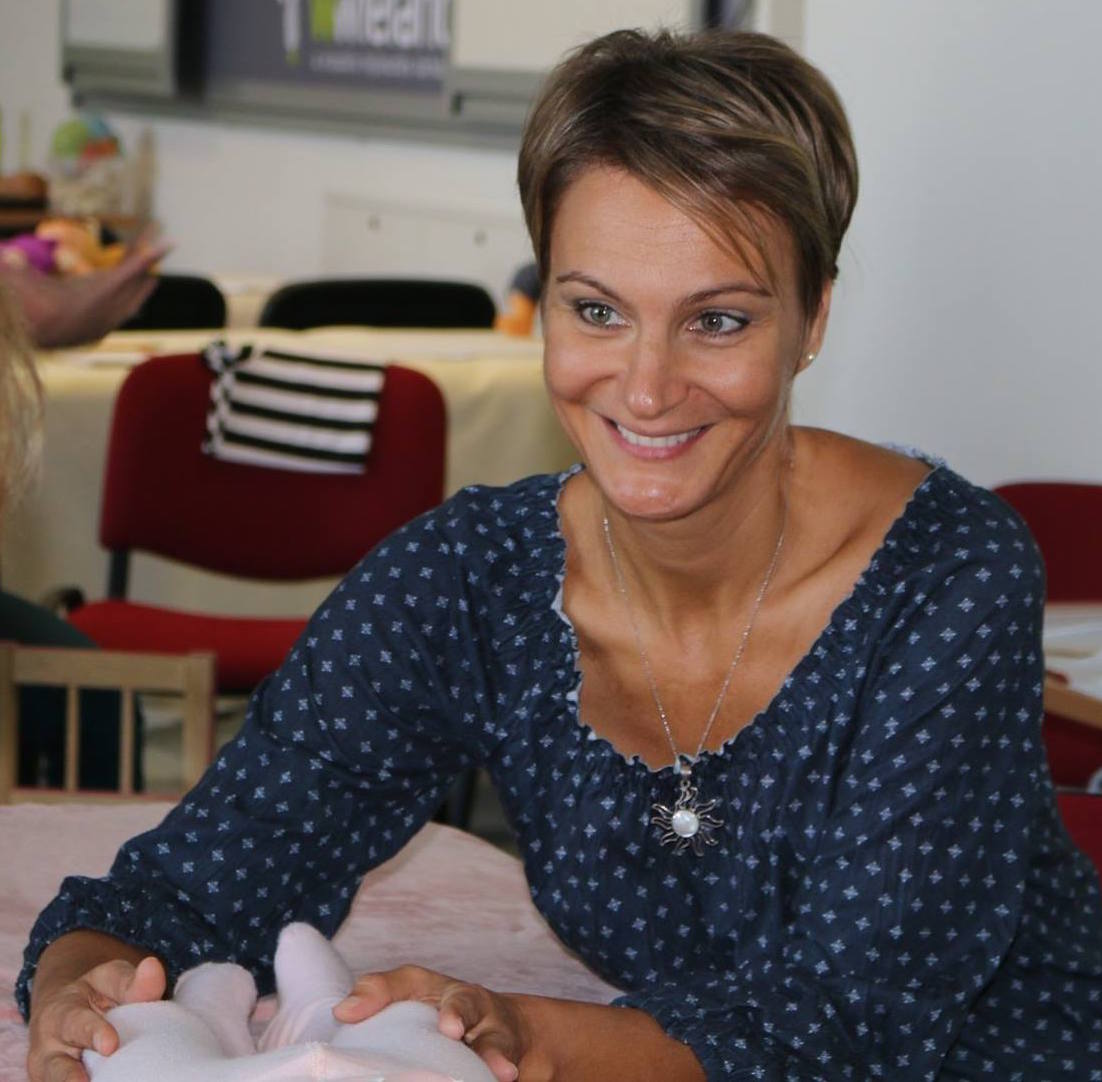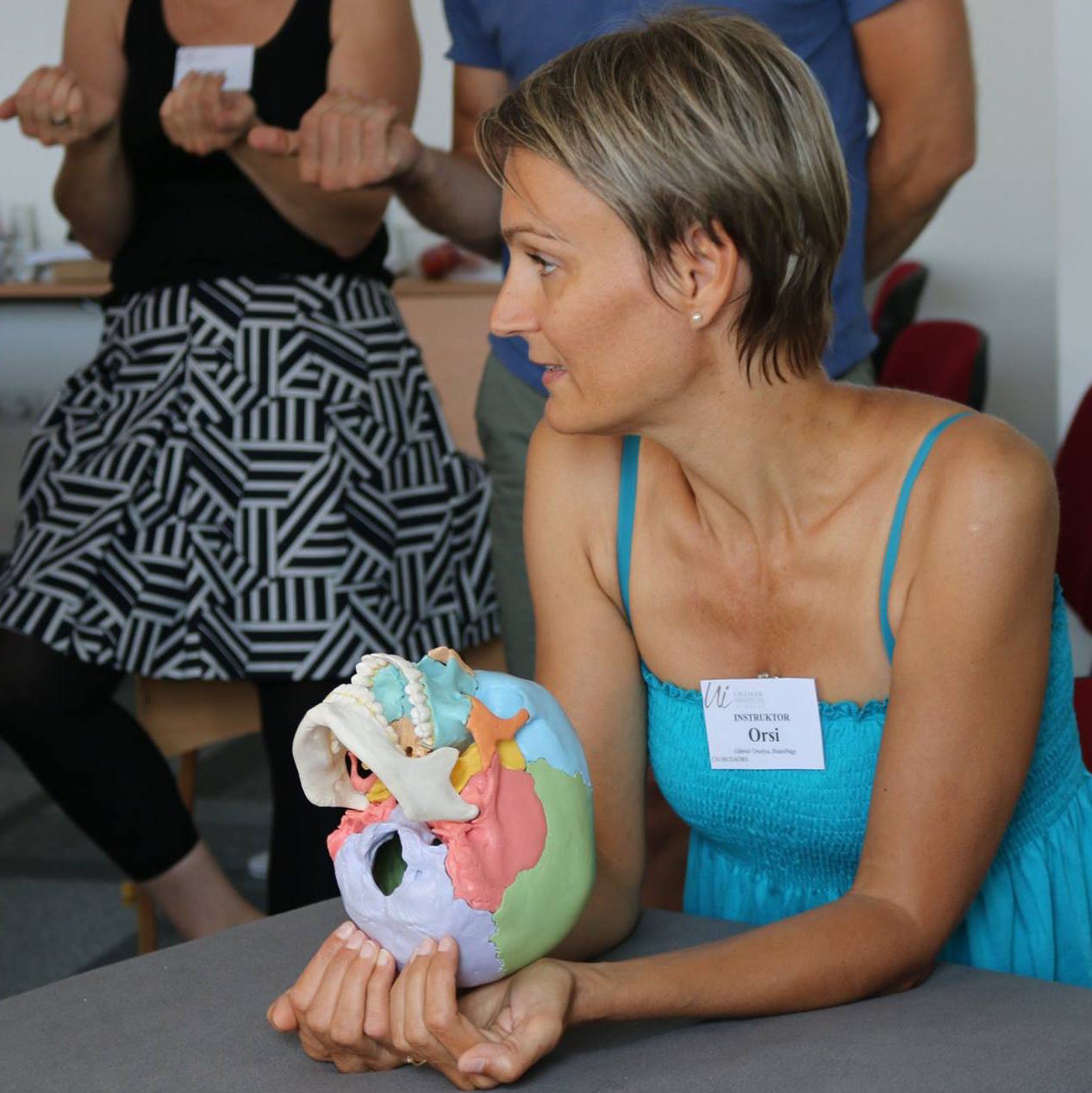Focus on Gabriel Orsi

 Orsi is the Director of the Upledger Institute, Hungary, and is joining us in March to help deliver our Paediatrics course in Brighton. In this article, she tells us about her career, her interest in teaching CranioSacral Therapy, how she got involved with the Upledger Institute and came to run the Hungary satellite.
Orsi is the Director of the Upledger Institute, Hungary, and is joining us in March to help deliver our Paediatrics course in Brighton. In this article, she tells us about her career, her interest in teaching CranioSacral Therapy, how she got involved with the Upledger Institute and came to run the Hungary satellite.
What’s your background and how did you first get interested in CST?
Being raised in a family of medical professionals (I am a daughter of an ophthalmologist (eye-surgeon) father and a radiologist mother, a second child of three) the passion for healing has always been in my blood. Although I studied at the most prestigious maths specialized high school of the country, I have always known that I would choose supporting/helping others as my profession.
I graduated as a teacher in the International Pető Institute of Conductive Education for the Motor Disabled in 1996, and worked with disabled children, for almost 15 years.
During that time, I also studied marketing and law, (graduating Summa Cum Laude at the Faculty of Communication in Esztergom), then naturopathy in Budapest, becoming a naturopath in 2011.
I witnessed CranioSacral Therapy for the first time in Denmark, in 2002, and when I discovered the wonderful effect it had for one of my favourite patients’ health and wellbeing, I fell in love with it.
Lucky enough to be able to study with Doctor John Upledger, I attended the first level of the curriculum in Singapore; then in 2 weeks, CST2 in Brisbane, Australia; back to Singapore for the third level (SER1); SER2 in Madrid, Spain; ADV1 in New Jersey, USA; ADV2 in Ireland, and finally ADV3 in the Bahamas. I completed all levels of the Craniosacral Therapy Curriculum at the Upledger Institute International and became a CST-D certified advanced therapist about 15 years ago.
What lead you to taking on the Upledger Institute, Hungary?
After opening my CST practice in Hungary in 2004, I soon realized, that many more well qualified therapists were needed to bring this incredibly effective therapy to more people.
I began to organize Upledger Craniosacral Therapy classes in Hungary in 2008, and in 2009 I was appointed as Director of the Hungarian Satellite of UII.
In the beginning, I took part in the courses as an assistant and interpreter to international colleagues, but soon recognised both the demand and the potential benefits of providing our Hungarian students CST training in their mother tongue.
 I started training as an Instructor in 2011. Since then I have taught not only in Hungary, but also in Hong Kong, Taiwan, Japan, Turkey, Ukraine, The Czech Republic, Slovenia, Denmark, Finland, Russia, and Latvia. I am certified to teach CST1, CST2, SER1, the Paediatrics class and Sensory Integration for CranioSacral Therapists.
I started training as an Instructor in 2011. Since then I have taught not only in Hungary, but also in Hong Kong, Taiwan, Japan, Turkey, Ukraine, The Czech Republic, Slovenia, Denmark, Finland, Russia, and Latvia. I am certified to teach CST1, CST2, SER1, the Paediatrics class and Sensory Integration for CranioSacral Therapists.
What was the most useful piece of the paediatrics classes to you when you first took them? Did it change the way you worked with adults too?
The paediatrics classes taught me to be a keen observer, a good listener and to be neutral. The practical sessions improved my palpation skills tremendously and strengthened my self-trust. I became more sensitive and grounded, not only in my work with children but in all my sessions.
I also learnt several ways of creating safety and gaining trust, which is a prerequisite of working with children.
Because working with children and babies requires more from the therapist than working with an adult does, everything I learnt was also useful in my sessions with adult patients.
What are your favourite parts of the Paediatrics 1 class curriculum?
I really love the practical exercises, both when the students work with each other to experience walking in the kids’ shoes for a while – those are so much fun – and the practical sessions with the children and their families who come to this class to receive multi-hand CST sessions from the students on day 3 and 4.
My other personal favourite is the anatomy/neurology section that tells us about the differences in anatomical structures that are behind the modifications in our evaluation and treatment of babies and children.
I also very much like the part when we explore meeting families where they are: how to acknowledge their emotions and needs, how to listen for the child’s story and the reactions to his/her family’s comments; how to work on more than one at a time.
Oh, and of course, SomatoEmotional Release with infants and children: for example, how can we dialogue with infants and children, especially those who are nonverbal. Learning about primitive reflexes and sensory integration: how the retained primitive reflexes can disturb some, or all the functions of higher centres, including behaviour and learning. What it is like when a “glitch” occurs in the central nervous system, and the brain cannot analyse, organise, and integrate sensory messages. How that affects motor, language skills, emotions, and behaviour.
As you can see I truly love the whole paeds material, basically there is no part of it which I don’t find either useful, or essential, helpful or fun!
Why would you recommend this course to our students?
CSP1 is a wonderful, educational, and practical experience which gives students safe tools to approach paediatrics and overcome any anxiety about working with children.
Working with infants and children requires more skills than working with adults for a variety of reasons. You have a moving target, a rhythm that is subtler, and because children don’t reason, they don’t have the coping strategy that we do as adults.
This class is all about helping the students, as therapists, to meet the children where they are, and to treat them gently and effectively, helping them in a way that CranioSacral Therapy can work. Not only for the children we are treating, but also for their families.
We talk about the importance of treating the family dynamic as well as the child and explore the different developmental stages: how does an infant think, how does an infant reason, what kinds of emotional changes does an individual go through as they go from an infant to an adolescent.
We talk a great deal about understanding behaviours and grow to understand that every behaviour is a form of communication, and that there are different neurological scenarios that create different behaviours.
We are thrilled you are coming the UK to teach – are there any specific things you would like to do while you are here?
I am so thankful for the opportunity to teach in England, to meet new people, to get the chance to get under the skin of Brighton and explore the city and maybe the coastline not as a tourist but with locals.

I am very easy to please – I love sightseeing, nature, food, walks, talks. But there is one special thing that I would like to do while I am there: to visit Brighton Pavilion. I just started to learn photography, and I would love to take a few shots of the palace. 🙂
You can book your place on CranioSacral Therapy for Paediatrics 1 with Orsi here. Or get in touch if you have any questions about the course, what we cover and if it's suitable for you. Pre-req – SER1
